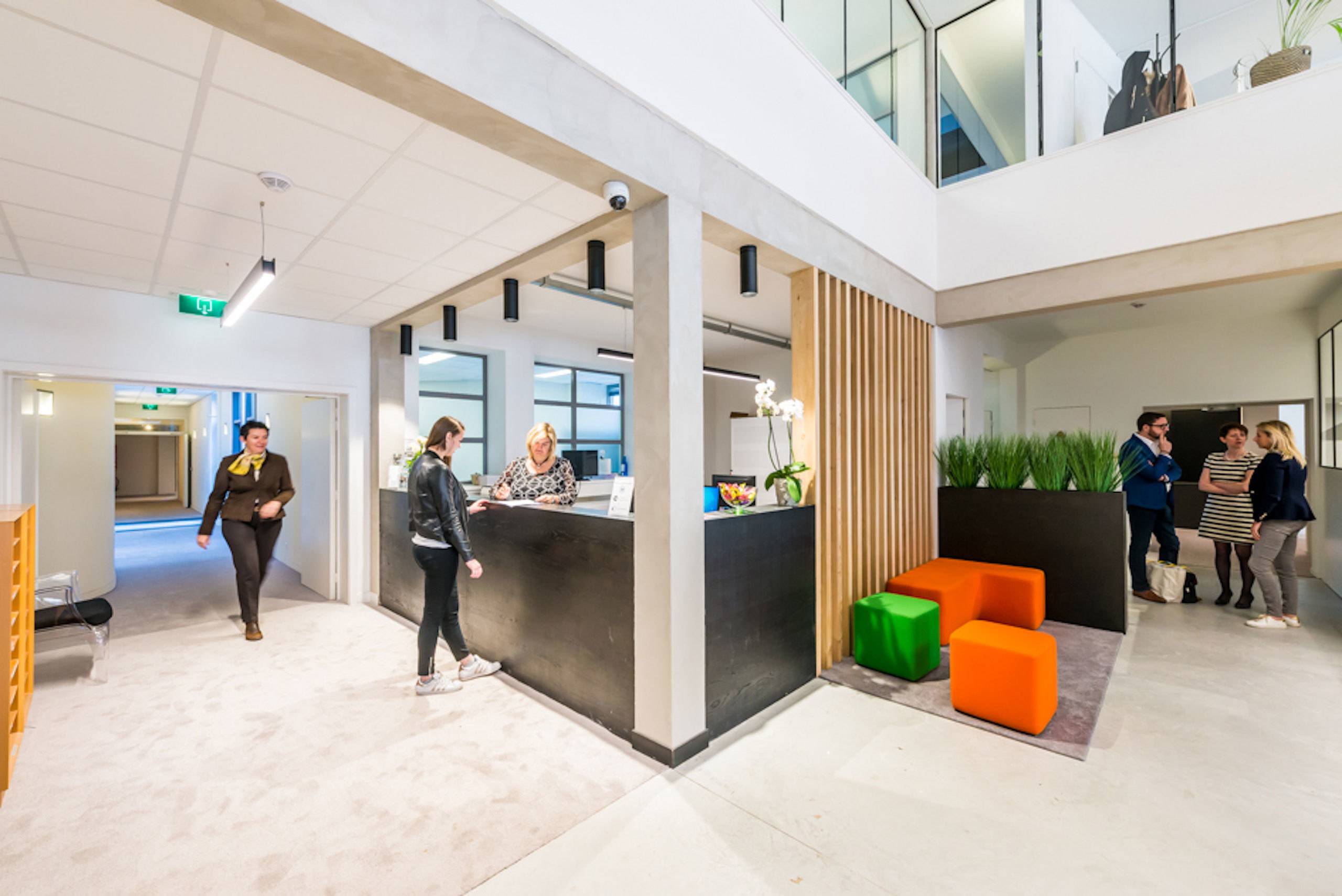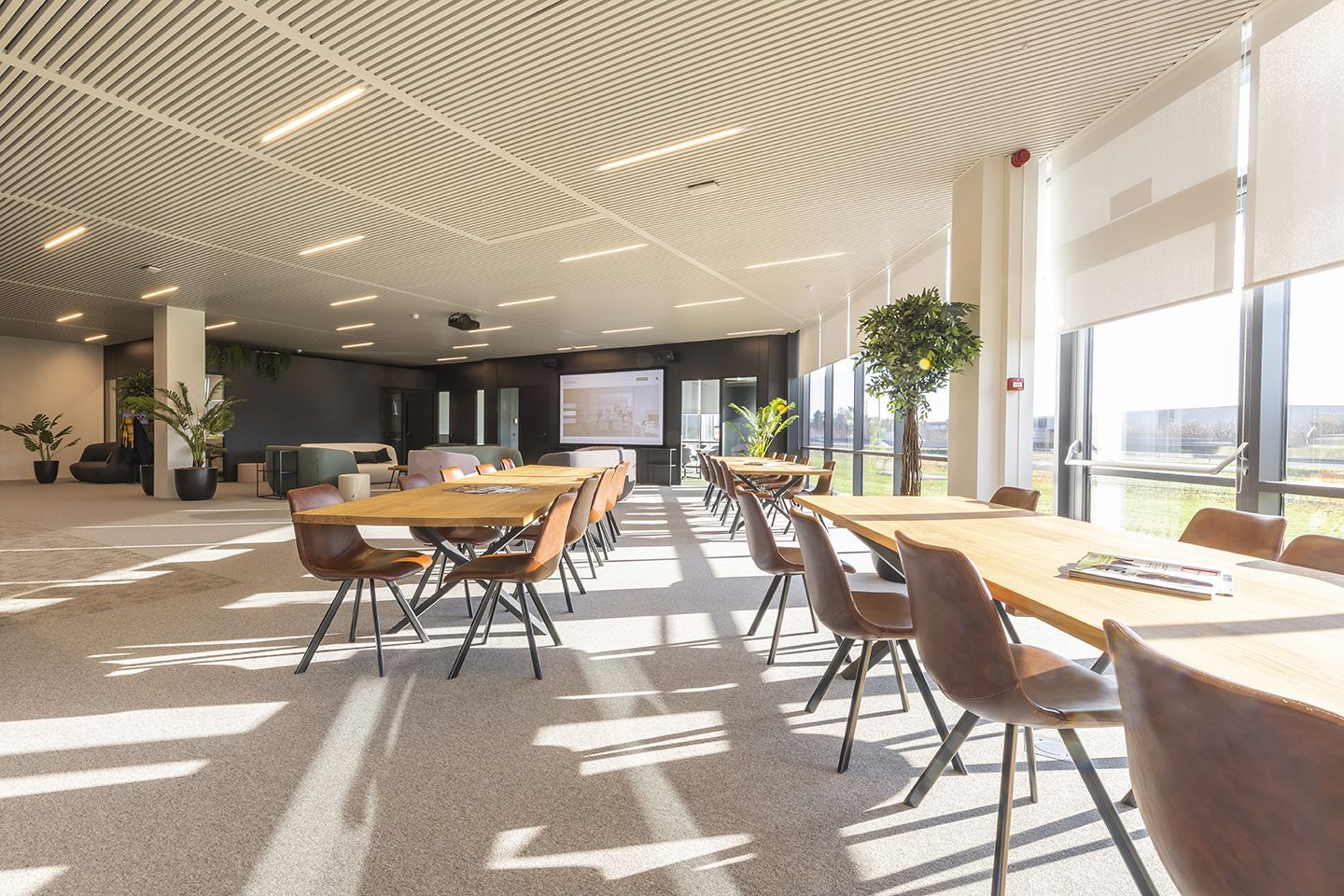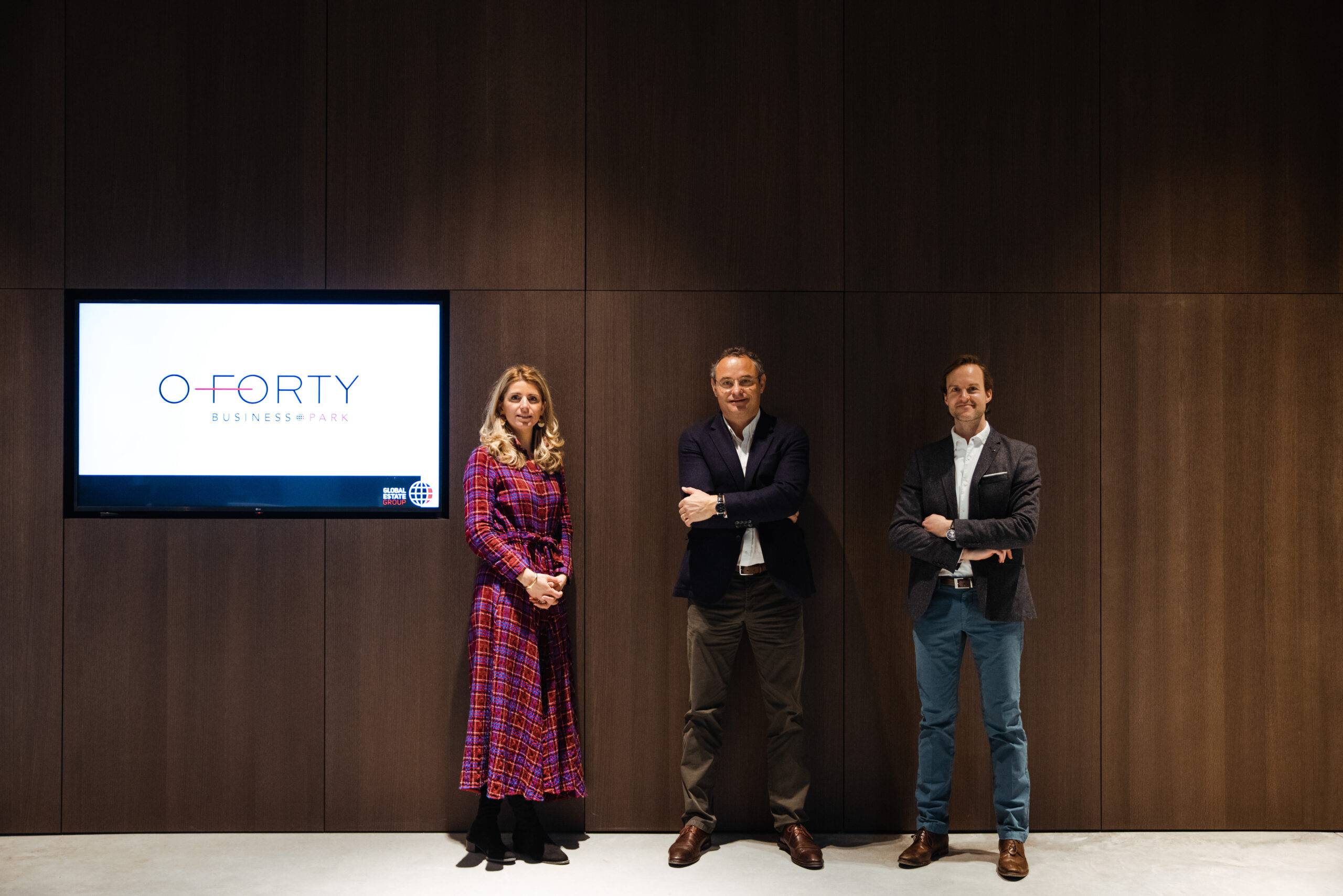
The core beliefs of Soulbricks
Soulbricks. More than 30 years of experience wrapped in a new initiative. Imagine your father transforming his furniture showroom into one of the better examples of co-working spaces in Ghent, some 30 years ago. Imagine yourself growing up in that environment, turning it into a success story. Imagine also, that because of your background as an interior designer, you can improve and change, future proofing the Park Office site. That is what we call a solid foundation. And that is precisely what Sophie Top (founding partner, Soulbricks) did. But she didn’t stop there.
Suppose you can put that knowledge to good use at other companies, other initiatives? Isn’t that proof of concept? Soulbricks was – among others – closely involved in the successful development of the MeetDistrict in the Ghelamco arena, now managed by her husband, Geoffroy Speybrouck.
Soulbricks did not exist at that time. It was only the expertise of Sophie and her team, and the apparent demand for that expertise that led to the establishment of the new company. And then growth became almost self-evident.
A conversation with Sophie Top, managing director of Soulbricks, provides interesting insights about giving your building a purpose or repurposing an empty building, now and in the future.
Furnishing, Architecture and Design
What is giving your building a purpose all about, for example? Design?
Indeed it is. It is pleasant to work in a beautiful space. And that design has to take into account much more than just beautiful furniture and pleasing colours, especially today. It’s about facilitating work for introverts, for sales teams. It’s about creating concentration rooms, meeting rooms, break-out rooms, and board rooms equipped with all comfort (and technology). It’s a continuous quest for the optimal use of the square metres, with an eye on the future, uncertain and volatile.
We don’t just think about the project itself, but about the entire building, the surroundings, the location, and even the brand behind the projects. The laws of retail and real estate also apply in our sector. Location is an important pillar.
If you have a fifteen-storey building, a smart approach to the first three storeys allows you to achieve a much higher return on the next floors. You have to pay attention to minute details and peripheral aspects, that all of a sudden could become significant problems.
Sometimes you have to discourage clients from doing something because you know that – despite a beautiful design – it will never work.
Service design
Does the story stop with styling and interior design? Absolutely not. It’s also a question of service design. In its simplest form, comparable to offering services and managing secretarial work and administrative support. So that clients can do their work undisturbed and focus on their business. This is where the experiences acquired in Park Office, managed, and run by Sophie Top, play an essential role. Precisely this experience is complemented within Soulbricks by the vision of Nicolas Kint, who, as a founding partner, brings ten years of experience in real estate technology.
More than anyone else, he represents the end user’s vision, as he himself has been an avid user of co-working spaces for the past ten years. The difference is essential. The customer wants all the support and back up he can get. The end-user wants ‘wellbeing’, which manifests itself in matters such as high-performance digital touchpoints, a varied catering offer, and even cultural activities. This aspect should not be underestimated. The needs of customers are always changing. Good service design takes this into account, responds to it, and anticipates it.
Managed services
Finally, it is also about the management of such environments and projects. Anyone can offer a nice space and offer some office facilities there. That is an outdated concept. It doesn’t work and ultimately leads to frustration and failure. That is also why a company like Soulbricks is asked to advise on projects. A difference is made, both in the long term and in the short time.
It’s always about those two aspects, and sometimes people forget that.
The long term has to do with making square metres profitable. The long term is also about implanting and dynamising the city and commercial centres as a working environment. In these times, you can’t help but consider mobility, the desire to work “close to home”, and even a phenomenon such as COVID. A well-thought-out co-working initiative does something like that. And that involves a lot. The long term also refers to the commercial value of a building and how to increase it. You have to keep an eye on that too.
The short term, in turn, refers to the inherent demand for flexibility, and we have noticed that long leases are becoming increasingly difficult. People want to be able to make short-term commitments, so you have to keep an eye on your occupancy rate and your possibilities for expansion. Experience plays a crucial role in this respect. And the ability to advise clients. Companies like Soulbricks put a lot of effort into this.
The future looks exciting, because the possibilities of this approach and the vision developed for serviced real estate are not limited to offices and companies. Soulbricks can expand its activities in other fields of activities, like education, universities, and healthcare.
Be it under their name or as a subcontractor.
That is what Soulbricks wants to prove in the coming years.




